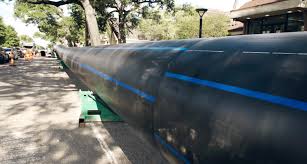Nov . 06, 2024 16:49 Back to list
HDPE Pipe Price List for Water Supply from Leading Manufacturers
HDPE Pipe for Water Supply An Insight into Pricing and Availability
High-Density Polyethylene (HDPE) pipes have become a cornerstone in the infrastructure of water supply systems around the globe. Renowned for their durability, flexibility, and resistance to corrosion, HDPE pipes are increasingly favored by municipalities and industries alike. This article delves into the pricing of HDPE pipes for water supply, examining the factors influencing costs, the advantages of HDPE over traditional materials, and the current trends in the market.
Understanding HDPE Pipes
HDPE pipes are made from high-density polyethylene, a type of plastic renowned for its high strength-to-density ratio. These pipes are extensively used in water supply lines, sewer systems, and drainage projects due to their excellent physical and chemical properties. Their smooth interior walls reduce friction and allow for efficient water flow, minimizing pressure loss and enhancing the overall performance of the water supply system.
Additionally, HDPE is a lightweight material, making it easier to transport and install compared to traditional materials like cast iron or concrete. Its flexibility enables it to be laid in trenches or configured around obstacles, reducing the need for extensive excavation.
Factors Influencing Pricing
When considering the price of HDPE pipes for water supply, several factors come into play
1. Material Costs The price of raw materials significantly affects the cost of HDPE pipes. Fluctuations in the price of polyethylene can lead to variations in pipe pricing.
2. Pipe Diameter and Thickness Larger diameter pipes (measured in inches) and increased wall thickness typically come with a higher price tag. These specifications are chosen based on the application—larger and thicker pipes are often necessary for high-pressure systems or greater water distribution needs.
3. Manufacturing Process The method used to manufacture HDPE pipes, such as extrusion techniques, can influence the cost. Advanced, energy-efficient manufacturing processes may initially require higher investments but can lead to cost savings in the long run.
4. Certification and Standards HDPE pipes need to meet specific industry standards and certifications before they can be used in public water supply systems. Pipes that comply with standards set by organizations such as ASTM and ISO often command a higher price, reflecting the quality and safety assurances they offer.
5. Market Demand The current demand for HDPE pipes plays a crucial role in setting prices. Increased investment in infrastructure, particularly in developing countries, can create a surge in demand, leading to price increases. Conversely, market saturation may lead to lower prices.
hdpe pipe for water supply price list factory

Current Price Trends
As of 2023, the prices of HDPE pipes vary widely based on the aforementioned factors. Generally, you might find prices ranging from $0.50 to $5.00 per foot, depending on the pipe's size, thickness, and other specifications. It is also essential to consider additional costs such as fittings, accessories, and installation services.
Manufacturers often provide price lists that detail costs for various diameters and wall thicknesses. Bulk purchasing can lead to significant discounts, making it advantageous for contractors and municipalities undertaking large-scale projects.
Advantages of HDPE Pipes
Despite their cost, HDPE pipes offer numerous benefits that often justify the investment
- Long Lifespan HDPE pipes can last over 50 years with proper installation and maintenance, reducing long-term costs significantly.
- Corrosion and Chemical Resistance Unlike traditional materials, HDPE does not rust or corrode and is resistant to various chemicals, making it suitable for diverse water sources.
- Environmental Impact HDPE pipes are recyclable and produced from recyclable materials, contributing to sustainable practices in water management.
- Low Maintenance The smooth interior surface of HDPE pipes minimizes buildup, leading to reduced maintenance needs over time.
Conclusion
Investing in HDPE pipes for water supply systems proves to be a wise decision for both short-term and long-term applications. Though initially higher in price due to various factors, the durability, efficiency, and environmental benefits of HDPE make them a preferred choice in modern water management. As infrastructure projects continue to expand globally, understanding the pricing dynamics and advantages of HDPE pipes will enable stakeholders to make informed decisions that align with their needs and budgets.
-
Flexible DN50 HDPE Pipes in Coils: Durable & Easy Install
NewsAug.08,2025
-
DN100 PVC Pipes for Well Casings | Durable & Corrosion-Proof
NewsAug.07,2025
-
Durable DN500 HDPE Double Wall Corrugated Drain Pipes
NewsAug.06,2025
-
32mm HDPE Pipes Coil: Durable & Flexible Water Supply
NewsAug.05,2025
-
DN100 PVC Well Casing Pipes | Durable Corrosion-Proof
NewsAug.04,2025
-
HORON 25mm PPR Plumbing Pipes - AI-Enhanced & Reliable
NewsAug.03,2025

